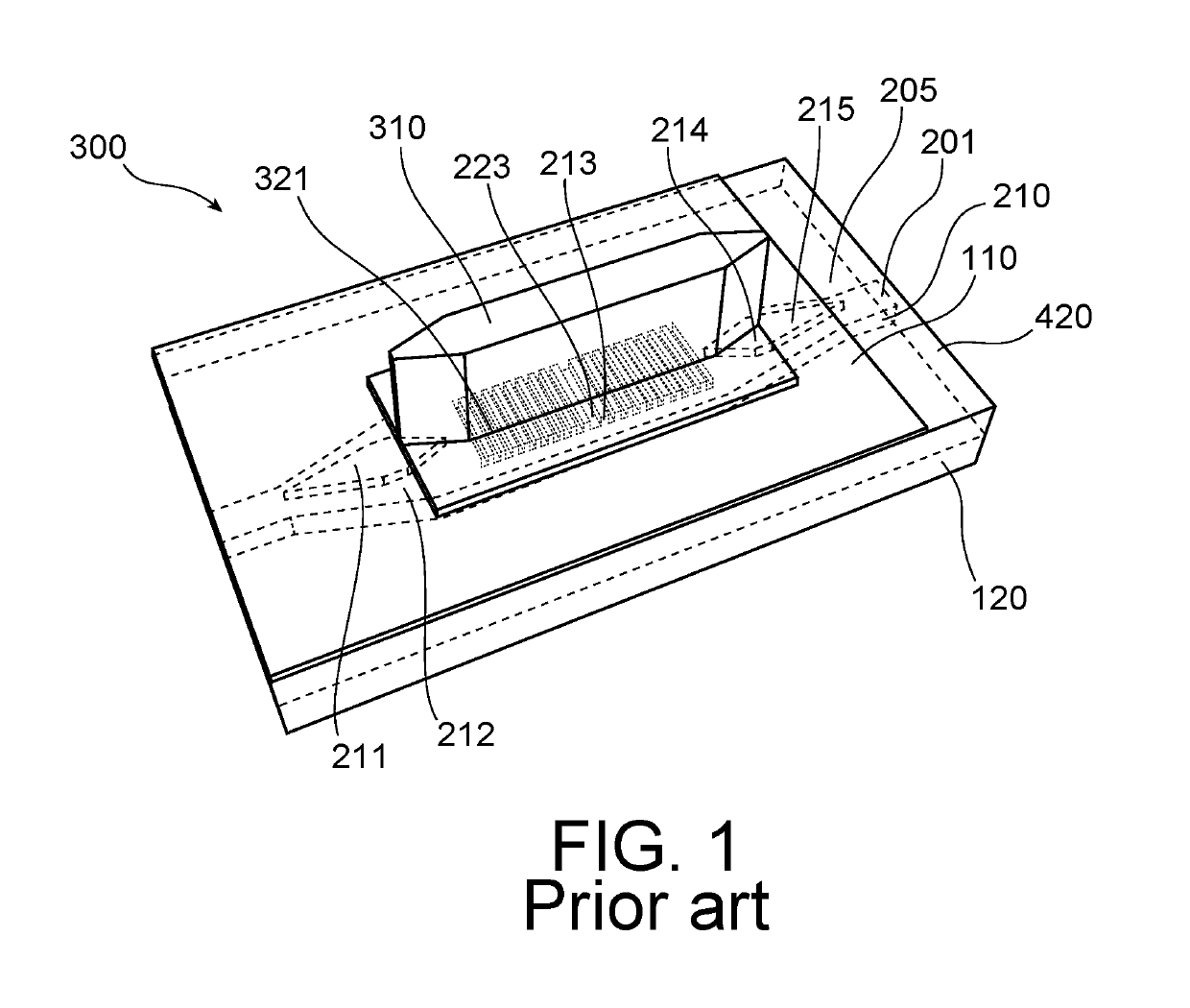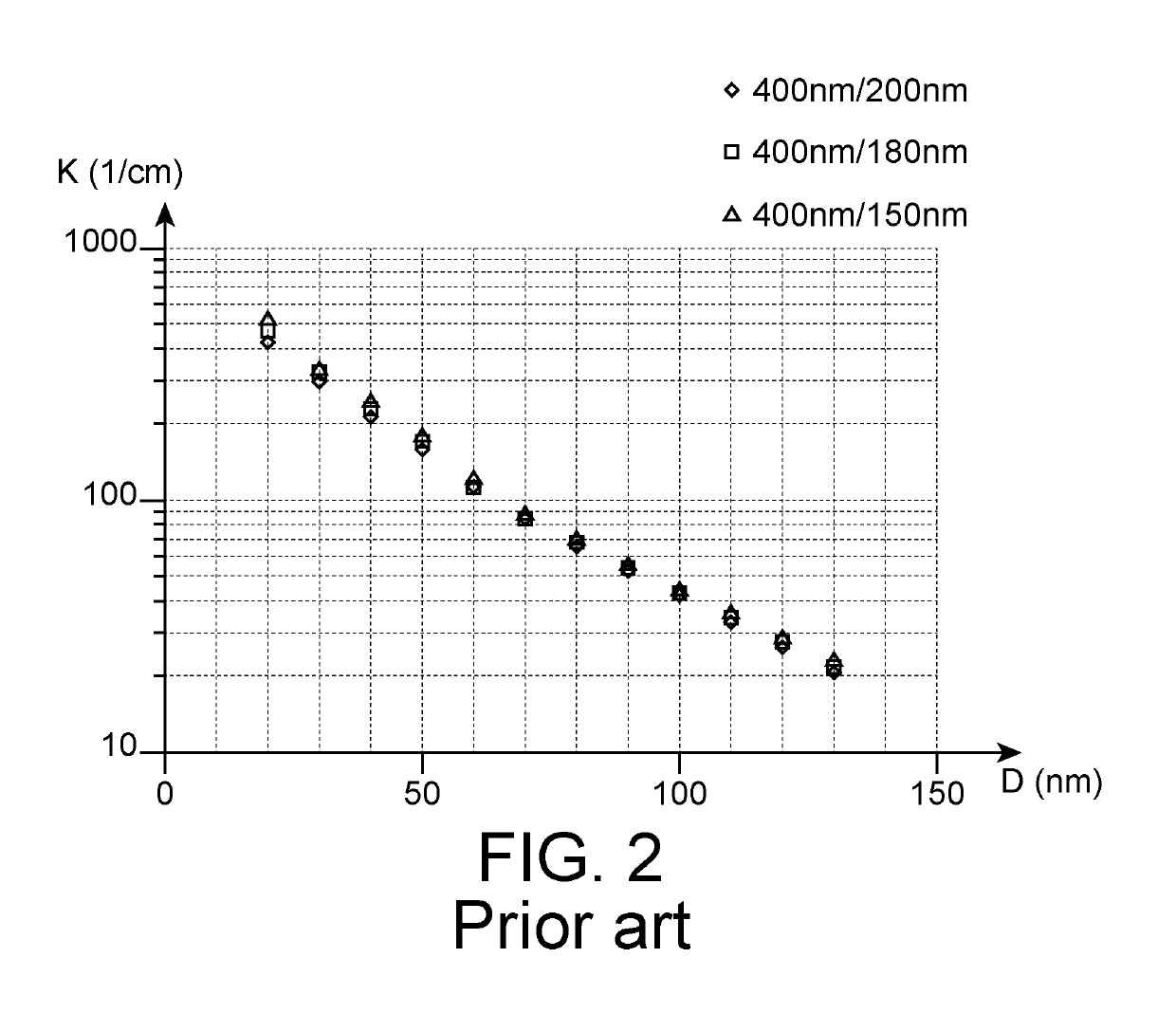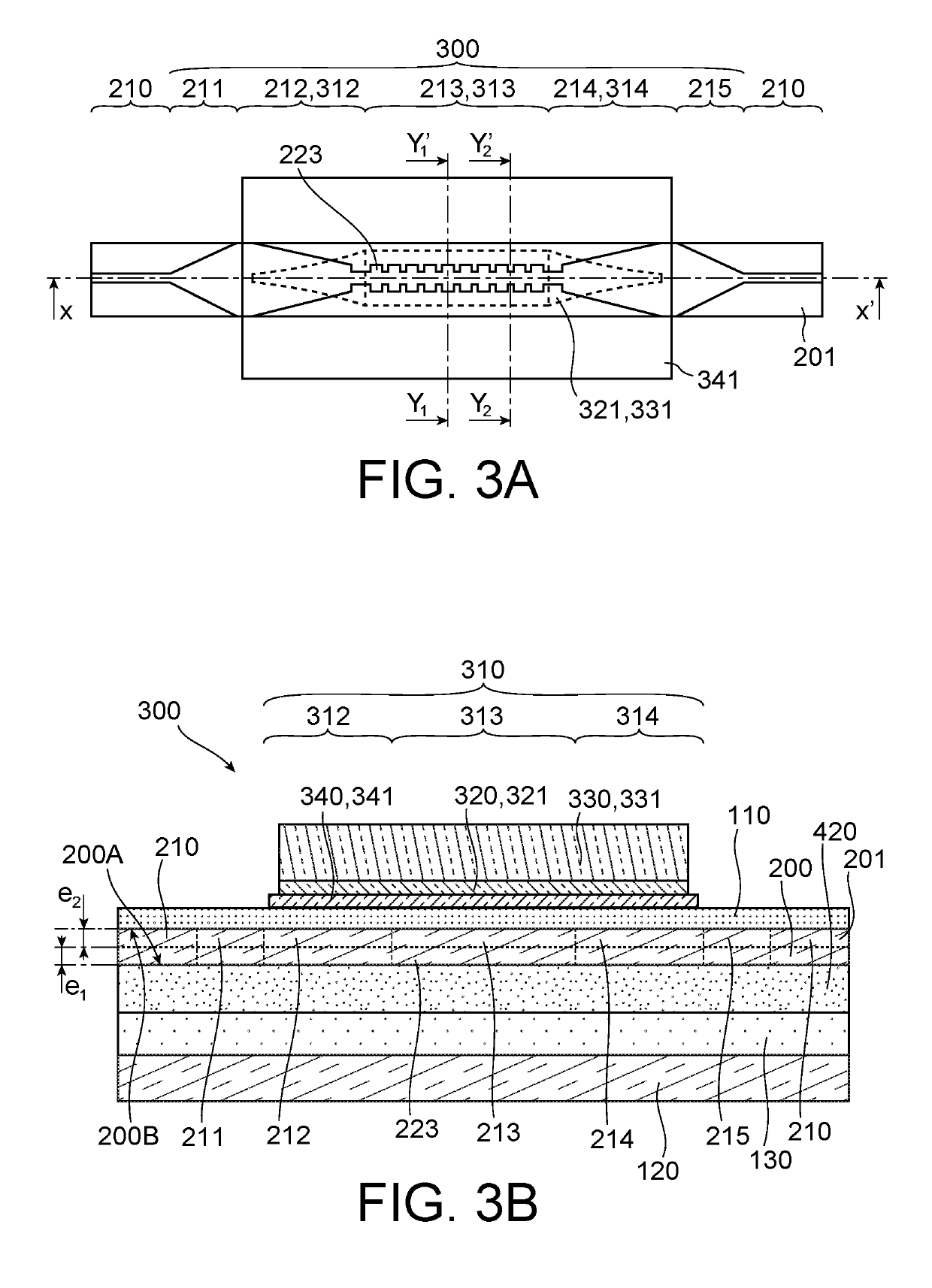Photonic device comprising a laser optically connected to a silicon waveguide and method for manufacturing such a photonic device
a photonic device and silicon waveguide technology, applied in the field of optoelectronic and photonic devices, can solve the problems of not being able to provide a dfb laser, not being able to benefit, and not being able to achieve the effect of providing a dfb laser
- Summary
- Abstract
- Description
- Claims
- Application Information
AI Technical Summary
Benefits of technology
Problems solved by technology
Method used
Image
Examples
first embodiment
[0095]FIGS. 3A to 3D illustrate respectively a top view, a longitudinal sectional view, a transversal sectional view along a plane Y1Y1′ and a transversal sectional view along a plane Y2Y2′ of a photonic device according to the invention, the sectional planes Y1Y1′ and Y2Y2′ being shown in FIG. 3A
[0096]FIGS. 4A to 4D illustrate, for FIGS. 4A and 4B, transversal sectional views of a laser hybrid waveguide of respectively the photonic device illustrated in FIGS. 3A to 3D and a photonic device according to the prior art, the thickness of a silicon layer being identical for these two optical devices, and FIGS. 4C and 4D graphically representing the variation in the Kappa value of a Bragg grating of respectively the optical device of FIG. 4C and that of FIG. 4D, as a function of the widths of the wide ridges and narrow ridges,
[0097]FIGS. 5A to 5F illustrate, in longitudinal sectional views, the main steps for manufacturing a photonic device as illustrated in FIGS. 3A to 3F,
[0098]FIG. 6A ...
second embodiment
[0099]FIGS. 7A and 7B illustrate respectively a top view and a longitudinal sectional view of a device in which a gain structure of the photonic device has a first and a second end including a constant transversal section,
third embodiment
[0100]FIGS. 8A to 8B illustrate respectively a top view, a longitudinal sectional view, a transversal sectional view along a plane Y1Y1′ and a transversal sectional view along a plane Y2Y2′ of a photonic device in which a pattern of a third waveguide section has over a first thickness an alternation between a transversal section of a first width and a transversal section of a second width of zero value, the sectional planes Y1Y1 and Y2Y2′ being shown in FIG. 7A,
[0101]FIGS. 9A to 9E illustrate, in longitudinal sectional views, the main steps for manufacturing a photonic device as illustrated in FIGS. 7A to 7D,
PUM
 Login to View More
Login to View More Abstract
Description
Claims
Application Information
 Login to View More
Login to View More - R&D
- Intellectual Property
- Life Sciences
- Materials
- Tech Scout
- Unparalleled Data Quality
- Higher Quality Content
- 60% Fewer Hallucinations
Browse by: Latest US Patents, China's latest patents, Technical Efficacy Thesaurus, Application Domain, Technology Topic, Popular Technical Reports.
© 2025 PatSnap. All rights reserved.Legal|Privacy policy|Modern Slavery Act Transparency Statement|Sitemap|About US| Contact US: help@patsnap.com



